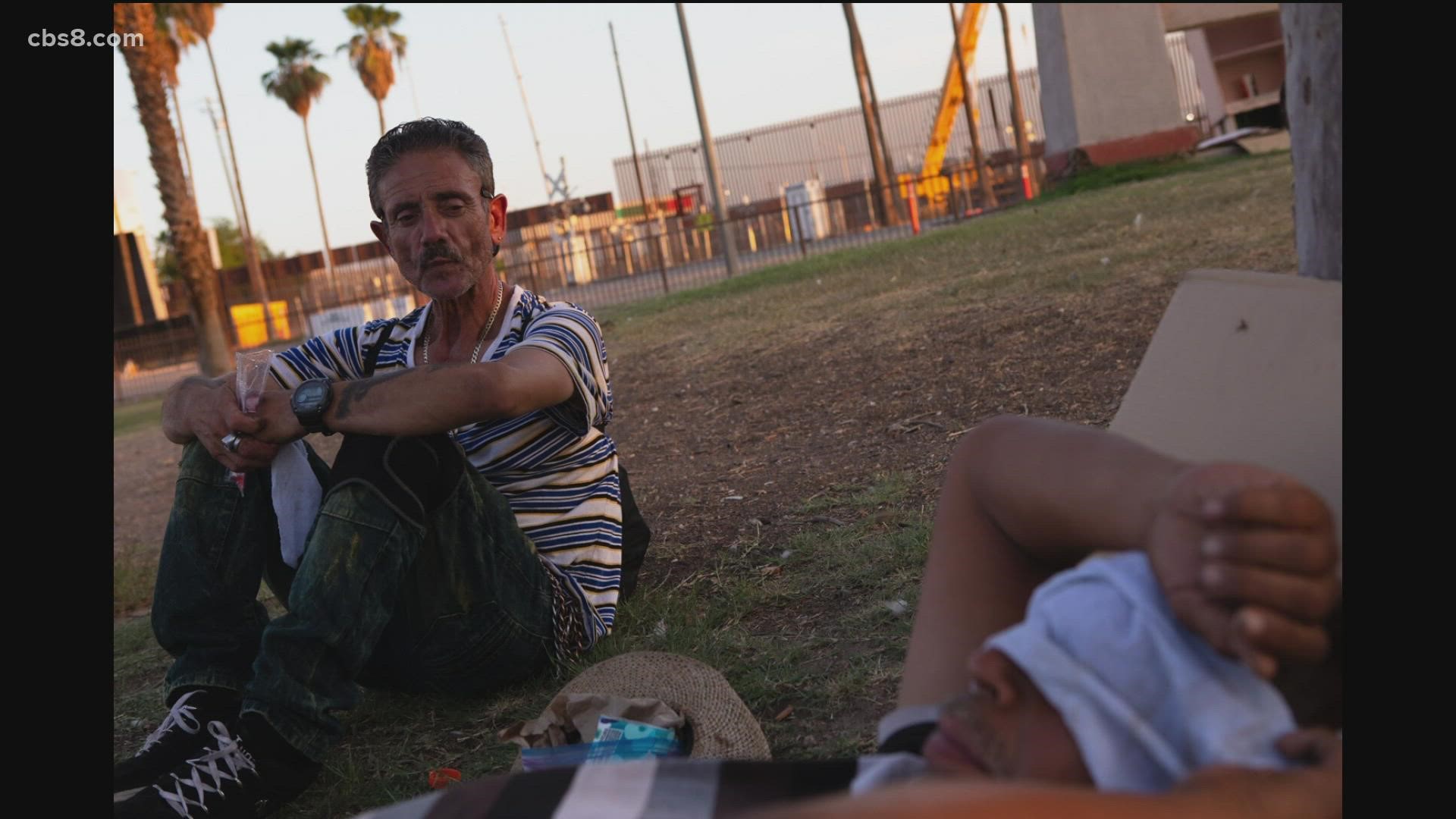CALIFORNIA, USA — It’s three o’clock on August 4th and the temperature is creeping towards 119 degrees Fahrenheit in downtown Calexico. Maribel Padilla, the co-founder of the Brown Bag Coalition, is driving a van around the city to hand out water, cold towels and snacks to people who are unsheltered on the street. She makes water deliveries anytime the temperature goes over 114 degrees.
Padilla is concerned about one man, Pedro Sanchez, known as Peter, who she hasn’t seen in a couple of days. “I worry that if he lays down where there used to be shade, and time goes on and then the sun hits them and they don’t wake up … that’s how they end up dying from the heat. So anytime I don’t see him for a couple of days I start getting antsy.”
In Imperial County, 22 heat-related deaths have been confirmed so far this year through Oct. 2, according to the county health department’s survey of local hospitals. It’s only the second time in at least 15 years with available data that heat-related deaths have surpassed 10 in a year. The other time was in 2018, when 25 deaths were linked to extreme heat in the county.

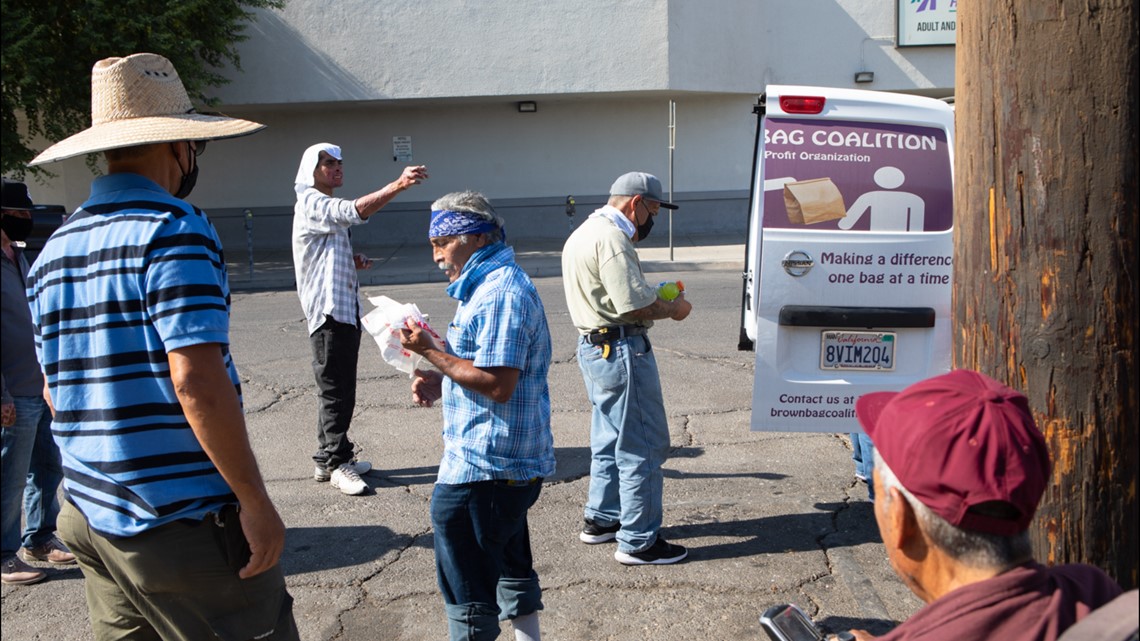
This year, heat may be credited with taking even more lives. Three unhoused men who were living in downtown Calexico died this summer, according to stories in the Calexico Chronicle. Although the Imperial County Coroner’s Office says the causes of death are still under review, their bodies were found within less than a half-mile of each other between early July and early August during excessive heat warnings, according to the articles in which first responders said heat played a role.
Extreme heat is part of life in Imperial County, but as the climate changes, the county is predicted to see more frequent and extreme days of heat in the future. The county hit its record daily maximum temperature in June 2017 at 122 degrees. Nine of the ten hottest three-day periods recorded in the county since 1962 have occurred since 2016.
Environmental justice advocate Luis Olmedo views the effects of climate change as a local public health emergency. “Throughout this COVID crisis … in the summers we have a public health emergency here. People are dying out here as a result of the extreme weather conditions.”
The executive director of the nonprofit environmental justice organization Comite Civico del Valle, Olmedo was speaking at a media event for the Pioneers Memorial Healthcare District donation of bottled water to the Brown Bag Coalition. Larry Lewis, the Pioneers District’s chief executive officer, agreed that summer heat creates a public health crisis every year. Donating water that can be given to those who need it, he says, is one way to alleviate the crisis.

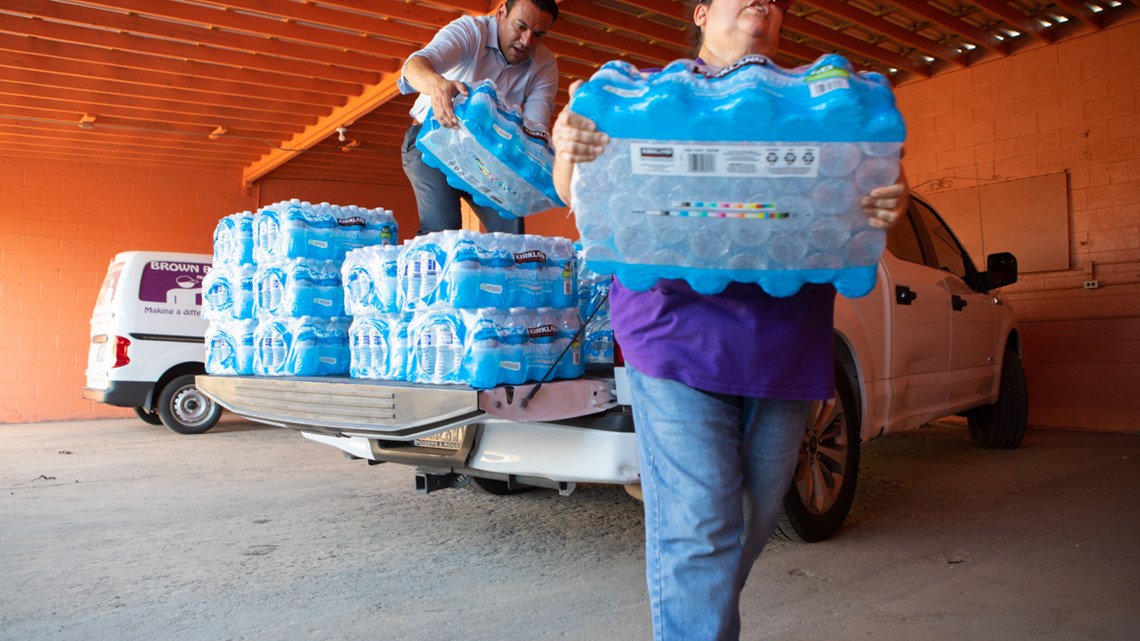
“If we don’t take care of people away from the hospital, they will end up there,” Lewis said. The healthcare district includes one of the county’s two hospitals, Pioneers Memorial Hospital, which is located in Brawley. “How do we keep people healthier and keep them out of the expensive and the crowded places and take care of them where they’re at instead of waiting for them to get into a crisis situation?”
In Calexico, advocates say that the city is not prepared to protect vulnerable residents in extreme heat. They say specific actions the city has taken in 2021 have neglected the needs of unhoused people. They say the continued closure of public bathrooms in the downtown area, as well as the limited accessibility of the city’s one cooling center, made the heat more dangerous for those experiencing homelessness.
Calexico city councilmember Raul Ureña, a frequent critic of fellow city leaders and an advocate for more services for those experiencing homelessness, says the city’s response this summer was inadequate and “shameful.” He admits that in part because of a budget crisis that has lasted more than a decade, the city has relied on community organizations and nonprofits to assist vulnerable communities in extreme heat.
“We’ve been leaving it up to the nonprofits almost completely,” he said. “People have died as a direct result of that.”
‘It could happen to me’
Padilla’s efforts to fill gaps in services for those experiencing homelessness started six years ago after spearheading the opening of an emergency shelter during a winter freeze. She met Sanchez the first night the shelter opened. When the shelter closed, she and co-founder Norma Aguilar distributed leftover food to people in brown bags. Community donations have continued to come in ever since and the Brown Bag Coalition now distributes dinners on a nightly basis at Calexico’s Border Friendship Park.
On the afternoon of Aug. 4, Padilla’s first stop is to people living in a small camp of shelters off of Cesar Chavez Boulevard, just down the street from the U.S-Mexico border crossing.

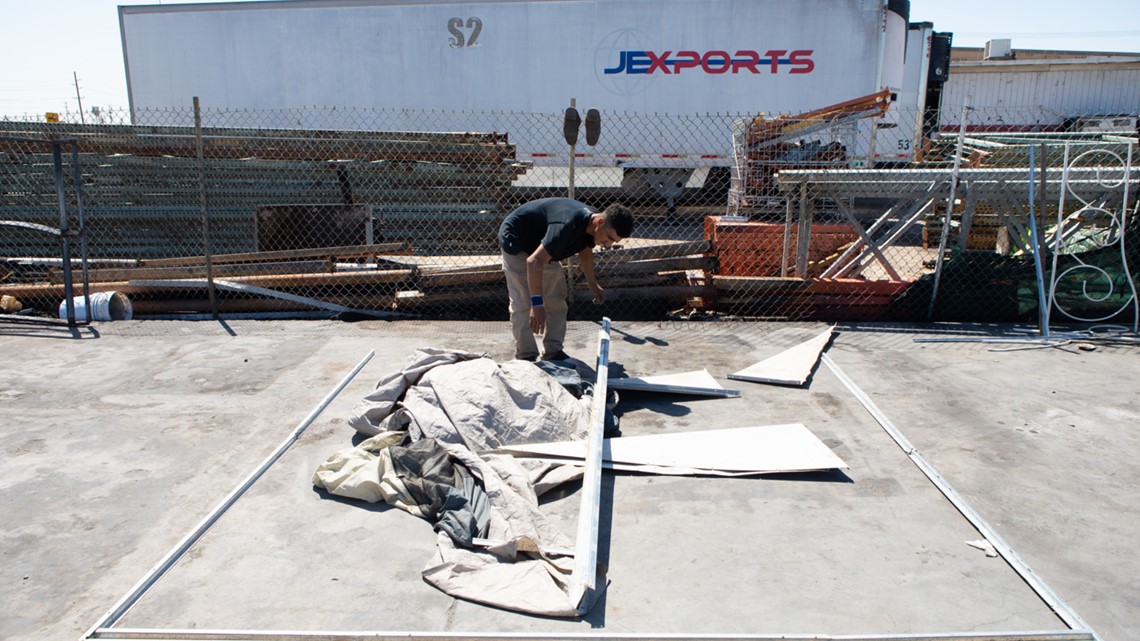

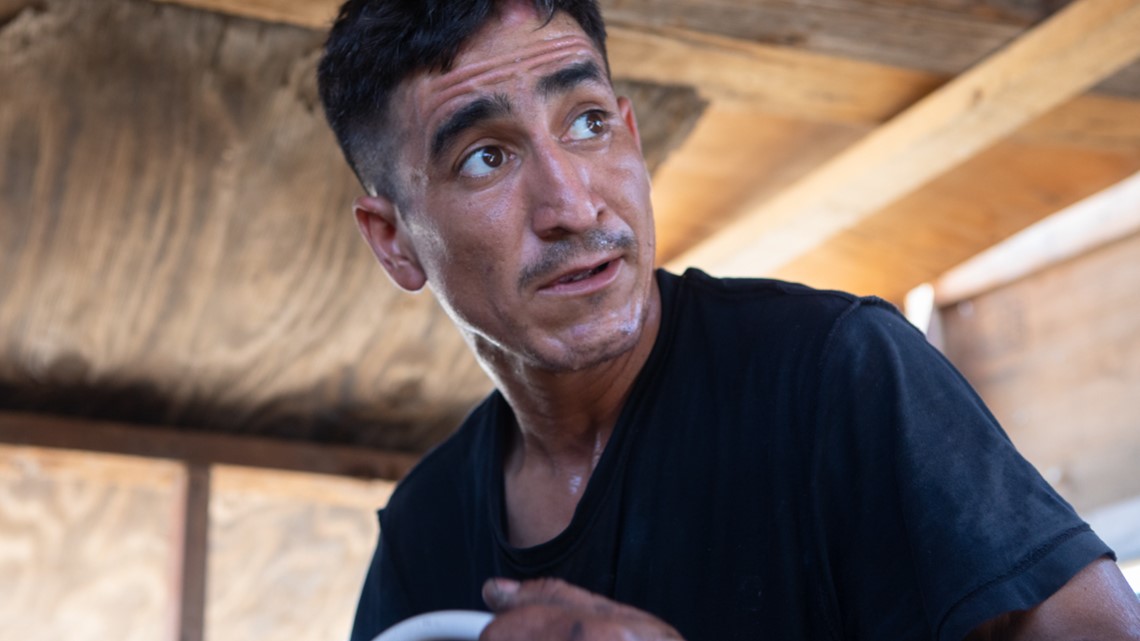
Although only several blocks away in distance, the camp is separated from the rest of downtown by train tracks and south-bound traffic to the border. Once the border line backs up later in the afternoon, Padilla avoids driving over to that part of the city because of the traffic. The encampment sits on a dusty lot and is surrounded by mounds of recycled scrap material. On the other side of a chain linked fence sit dozens of transport trucks and an auto body shop.
Francisco “Pancho” Ramirez is one of the people who comes out from the shade of a shelter to take the water Padilla offers. Ramirez grew up in Mexicali and worked for decades as a farmworker throughout the state of California. He still has family that lives in a home in Mexicali, but he says they’re now estranged.
He’s been staying at the Cesar Chavez camp for the past year or two. Previously, he slept on the streets downtown and would spend many hours looking for shade to stay cool in during the day. The shelter he’s built out of scrap wood and metal provides a dependable shadow from the sun on hot days. Across a vacant lot from the camp, there’s a small shopping center where he and others go to buy water, ice and food. He uses a wrench to open the nearby fire hydrant when he needs to bathe or cool off in the water.

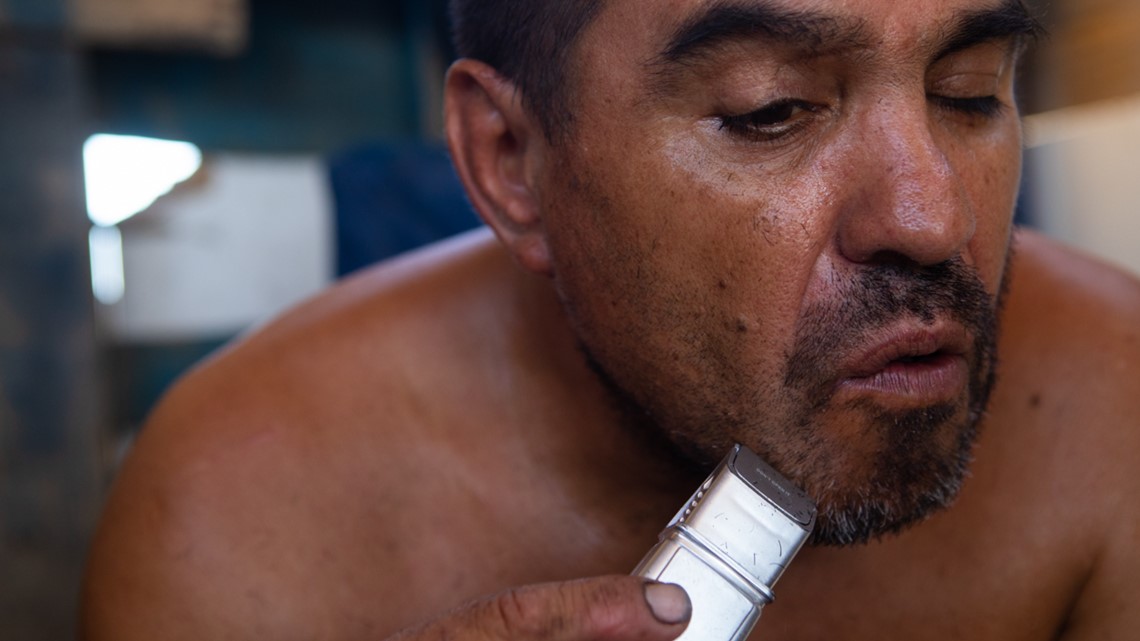

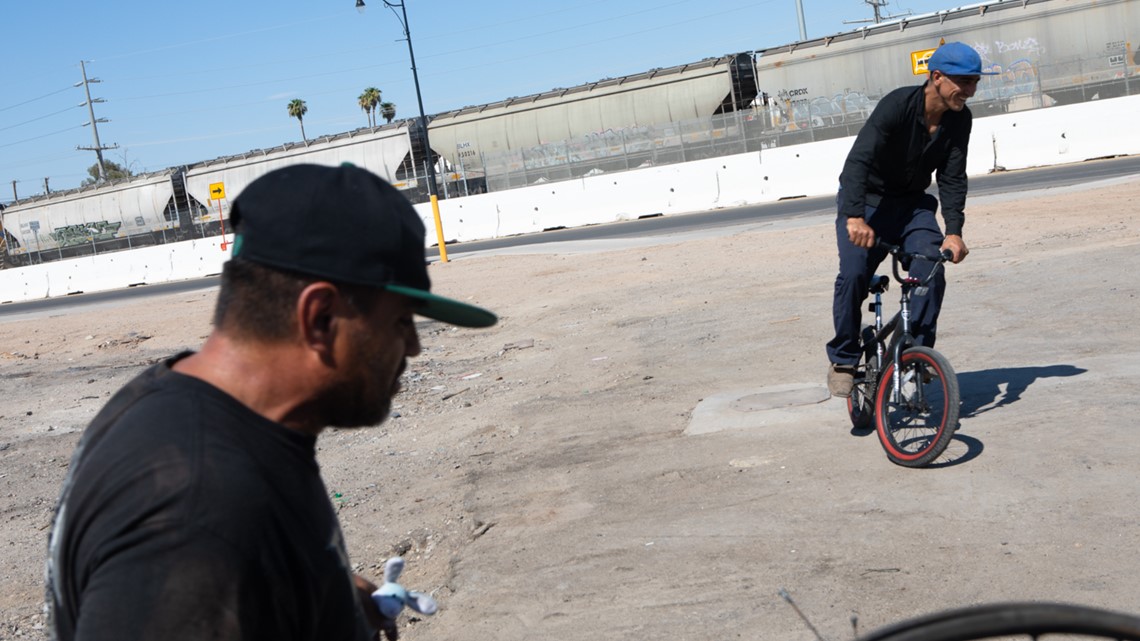
Now 55, Ramirez no longer works in the fields during the heat of the summer. He recalls a hot day when he was younger and was taken to the hospital after experiencing symptoms of a heart attack while he was working.
“I wouldn’t eat and I would work in the field. I was carrying a box and suddenly felt a pain in my calves and a sensation in my hands and in my face too,” he says in Spanish. “I was working, sweating a lot and on drugs. I thought I was going to die.”
He stayed at the hospital for 24-hours and the doctor who treated him told him to stay out of the sun and avoid working in the heat. Ramirez has also been diagnosed with high blood pressure which he knows puts him at greater risk in the heat.
Ramirez was friends with a man known as Cuba, one of two men who according to a news report died in downtown Calexico on July 9 with signs of heat exhaustion. The two would often recycle cans and bottles together, and Cuba’s death surprised Ramirez. He guesses that what happened to Cuba was similar to what he himself experienced that day in the field and what he could experience again. “I know that what happened to Cuba could happen to me.”
‘Where do these people go?’
Advocates say the city could make simple changes to save the lives of people like Cuba.
Padilla brings water directly to Ramirez and others at the Cesar Chavez camp with the belief that in order for resources to be effective, they need to be available in the locations that people are staying.
The city of Calexico did operate one cooling center this summer, but it was located at the Calexico Community Center in a residential area about a mile from the downtown area where many people experiencing homelessness stay. According to a flyer on the door of the cooling center, it was open Monday through Wednesday from 1-5 p.m., Thursdays from 1- 4 p.m. and every other Friday from 1-5 p.m. It was not open on the weekends or for extended hours on days of excessive heat.
Ismael Arvizu, of the community organization Calexico Needs Change, agrees with Padilla that the cooling center should be located in a building downtown.

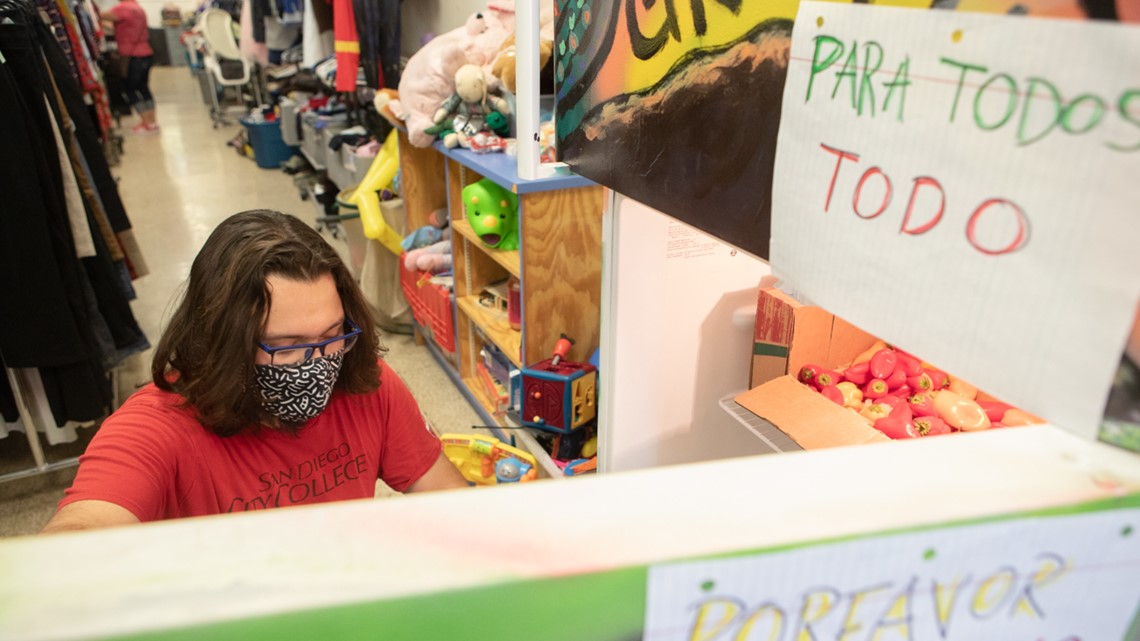
“The fact that they made it in the community center, which is like blocks away from where people really need it, shows to everyone how much they don’t care,” Arvizu said.
His organization has been working to form a coalition with other leaders downtown that can provide resources, such as a cooling center, closer to the people who need them. Calexico Needs Change stocks a community refrigerator at the Calexico Wellness Thrift Store on 2nd Street with donated water and food. Padilla also keeps bottled water at the store that people can come in and ask for.
However, Calexico Mayor Javier Moreno says it’s up to those who need it to take advantage of the resource.
“Having a cool center for them the whole 10,12 hours that it’s hot — it takes a lot of resources for that,” Moreno said. “Even if we did, they’re not willing to walk all the way over there for whatever reason.”
Padilla says the city could also alleviate some of the challenges for those who are homeless by reopening the public bathrooms downtown.
“There’s no water fountains. They closed down all the bathrooms. So where do these people go?” she said.
In March of 2020, Calexico closed public bathrooms and water fountains as part of a sweeping public health mandate at the beginning of the COVID-19 pandemic. Some public bathrooms and water fountains in the city were reopened in May of 2021, but the bathrooms downtown remain closed. There are no water fountains in the downtown area.
Before the COVID-19 pandemic, the city operated two public bathrooms downtown. One set is in Calexico’s Border Friendship Park and the other is next to an orthopedic clinic on the east end of 1st Street. One of the men who died on July 9 was found at the latter location.
Councilmember Ureña says that while the bathrooms were initially closed over concerns from COVID-19, the city is allowed to open them back up. “The city is operating like a 7-Eleven that once it cut costs, that keeps the restrooms closed, when under the public health mandate or the local public health authority, we’re able to open them up, but we keep them closed to save a couple cents on the dollar.”
According to Public Works manager Lilliana Falomir, reopening the downtown bathrooms would cost between $80,000 and $90,000 because of needed plumbing fixes and other improvements. Moreno said that though the closures initially came along as a pandemic protocol, they’ve remained close because of concerns for safety.
Rather than opening the current bathrooms, Moreno said the city is depending on a California state farmworker assistance bill says would help develop a farmworker service center downtown that will house public restrooms that can be monitored. The center would be located across the street from the currently closed bathrooms. The bill was signed into law Sept. 22.
Councilmember Ureña says he wants the city to be more proactive in curbing heat-related deaths and illnesses by making resources directly available to those who are vulnerable.
“What do we do as decision makers to address and facilitate the solving of the issue at the core, which is getting someone that hydration before we have to call an ambulance?”
The city expects to receive $9.5 million from the American Rescue Plan, which Ureña would like to see spent in part on providing direct services to people who are unhoused as well as to farmworkers. He’d like to see the bathrooms downtown reopened and for buildings to be used for transitional and affordable housing. The city has received half the money, and a portion of the funds have already been allocated to the fire and police departments.
Searching for shade
It’s late August and Fernando Toledo is one of several men lying in the shade at Calexico’s Border Friendship Park, where the Brown Bag Coalition is serving one of its nightly dinners. It’s located next to the border fence at the southwest corner of downtown, across from the Port of Entry, and is where many people who are unhoused seek refuge from the heat.

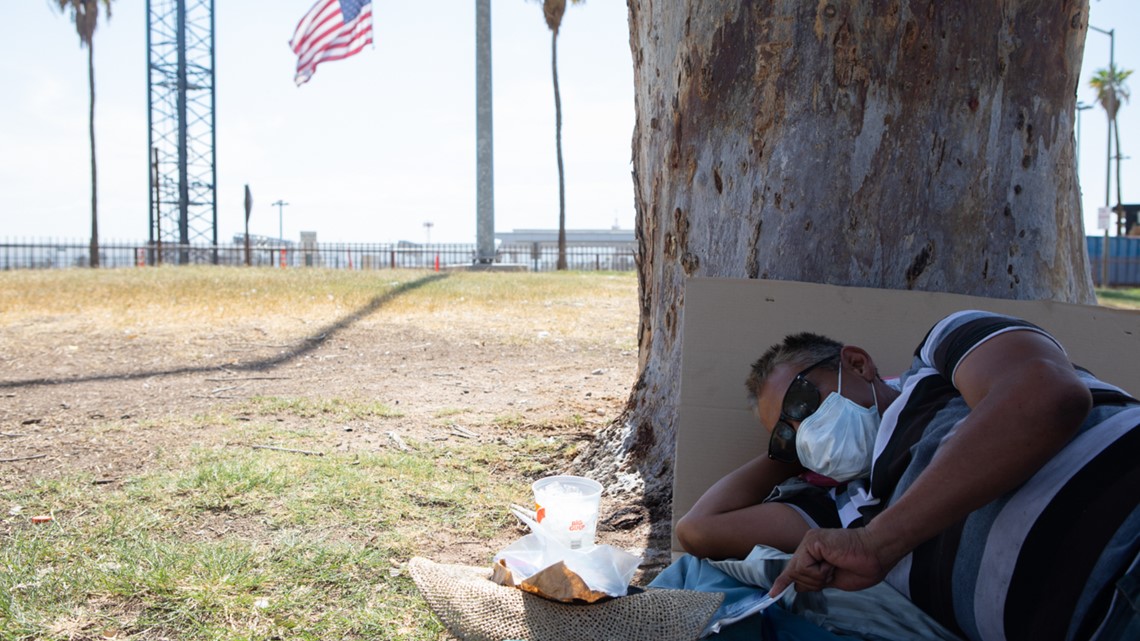
The park houses one set of the closed bathrooms. When the bathrooms were open many used the sinks as a source of water.
For the first few months of 2021, Toledo stayed at an encampment started by Calexico Needs Change on the east side of downtown. It was set up as a place for farmworkers to stay before and after work and was cleared out by Calexico police in early April. On the night of Aug. 26 he says he’s been feeling sick with a headache and stomach pain after working in the fields earlier in the week.
Toledo sleeps on a small bench in the park that night and moves to a place on the grass in the shade of a nearby building as soon as the sun hits him in the morning. He says he’s feeling better that day but still doesn’t feel well enough to work outside in the heat. He spends the day moving between patches of shade in the park to sleep under.

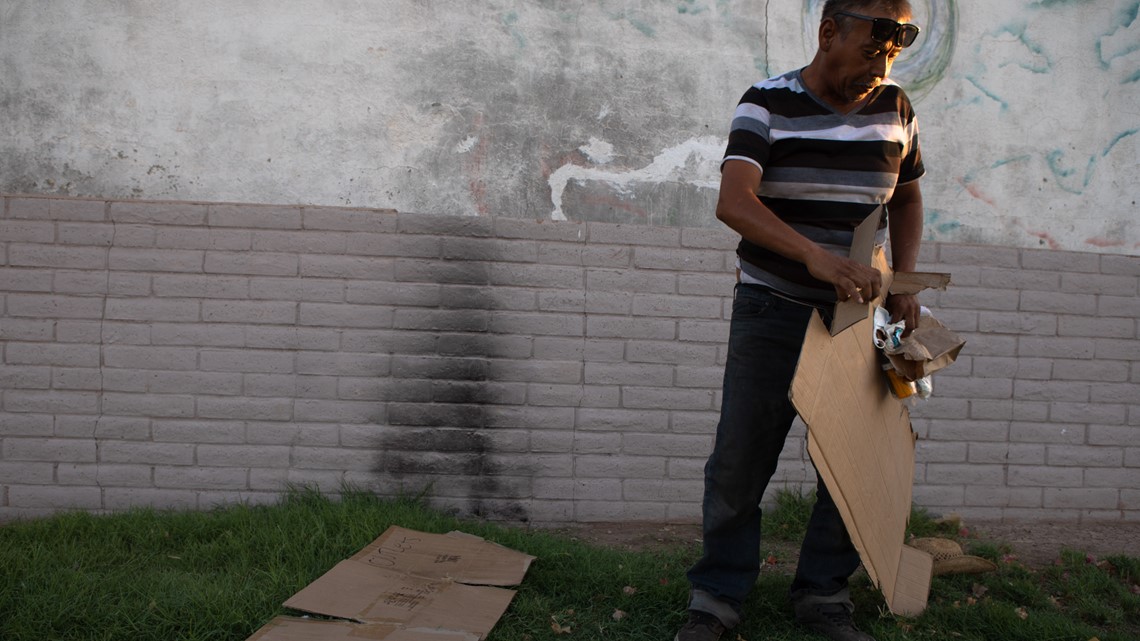

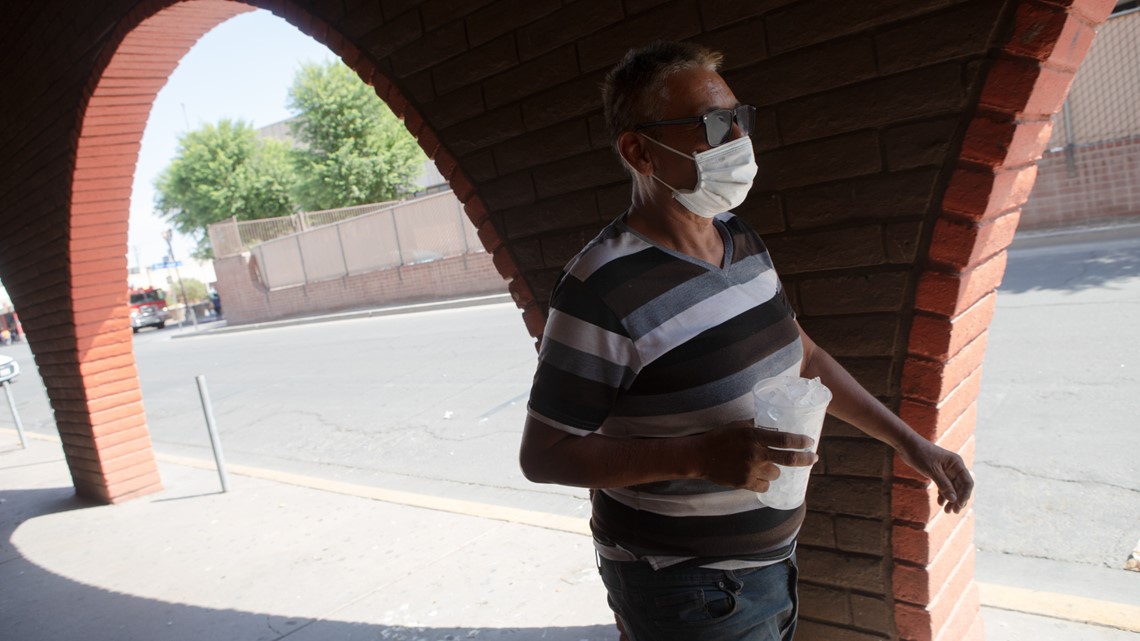
One of the few times Toledo leaves the shade is to refill a cup of ice. He walks a block to the nearby 7-Eleven and fills a plastic cup up at the vending machine. When he reaches the front of the line with a handful of change, the cashier waves him through with a smile. Back in the park, Toledo has a few bottles of water from the Brown Bag Coalition to last him through the day. He’ll get more at their dinner at the park that night. The cooling center is closed that day but when asked if he’s ever gone, he says he’s never heard of it.
Pedro Sanchez, friend of Padilla and the Brown Bag Coalition, died on Sept. 11, from causes that were not heat related. A memorial service will be held for him on Oct. 16 at 5 p.m. at the Women’s Improvement Club in Calexico.
inewsource is a nonprofit, independently funded newsroom that produces impactful investigative and accountability journalism in San Diego County. Learn more at inewsource.org.
WATCH: As heat-related deaths rise, advocates say Calexico needs to do more to protect its unhoused community

